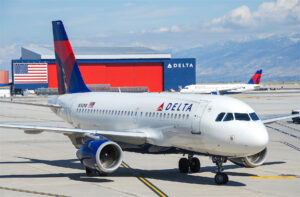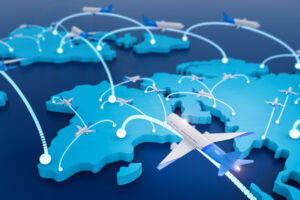Cost of flying
#1
Original Poster
Join Date: Oct 2010
Location: YYZ
Programs: A3*G AC*nobody TK*nobody
Posts: 1,967
Cost of flying
Based on UA data -> http://online.wsj.com/article/SB1000...Tabs%3Darticle
I think they have picked one of the worst case scenario... For long-haul, the profit margin should be better.
Near the end, it also sounded like Y pax is subsidizing J/F pax's meal... I guess that's if it only one pay for Y and get 'upgraded' to J/F.
And just don't lose people's luggage, there is a saving.
Interesting read...
I think they have picked one of the worst case scenario... For long-haul, the profit margin should be better.
Near the end, it also sounded like Y pax is subsidizing J/F pax's meal... I guess that's if it only one pay for Y and get 'upgraded' to J/F.
And just don't lose people's luggage, there is a saving.

Interesting read...
#2
Join Date: Jul 2007
Location: YYZ
Programs: AP
Posts: 436
Based on UA data -> http://online.wsj.com/article/SB1000...Tabs%3Darticle
I think they have picked one of the worst case scenario... For long-haul, the profit margin should be better.
Near the end, it also sounded like Y pax is subsidizing J/F pax's meal... I guess that's if it only one pay for Y and get 'upgraded' to J/F.
And just don't lose people's luggage, there is a saving.
Interesting read...
I think they have picked one of the worst case scenario... For long-haul, the profit margin should be better.
Near the end, it also sounded like Y pax is subsidizing J/F pax's meal... I guess that's if it only one pay for Y and get 'upgraded' to J/F.
And just don't lose people's luggage, there is a saving.

Interesting read...
#3
Join Date: Jul 2008
Programs: Via Preference Privilege, AC*A, Fairmont Plat, SPG Gold
Posts: 1,334
Unless I missed it they don't give the distance of the hypothetical flight. Makes it tough to say if the fare is realistic or not.
Wonder how much an airline earns on a $550 o/w a/i fare from YWG-YPR and other similar destinations. Probably a bit better than the hypothetical flight in the article.
Wonder how much an airline earns on a $550 o/w a/i fare from YWG-YPR and other similar destinations. Probably a bit better than the hypothetical flight in the article.
#5
Join Date: Jul 2007
Location: YYZ
Programs: AP
Posts: 436
Unless I missed it they don't give the distance of the hypothetical flight. Makes it tough to say if the fare is realistic or not.
Wonder how much an airline earns on a $550 o/w a/i fare from YWG-YPR and other similar destinations. Probably a bit better than the hypothetical flight in the article.
Wonder how much an airline earns on a $550 o/w a/i fare from YWG-YPR and other similar destinations. Probably a bit better than the hypothetical flight in the article.
All we know is AC is losing money almost every quarter.
#9
Join Date: May 2012
Location: BKK/SIN/YYZ/YUL
Programs: DL, AC, Bonvoy, Accor, Dusit
Posts: 2,947
Wow, nothing like playing with the numbers and lowballing to get the desired result.
The WSJ uses "an average $146 fare for a domestic flight ($292 round-trip), plus $18 each in fees and add-ons". That's a total of $310.
The US Bureau of Transport Statistics tracks the cost of flights and they have a different number; Monday, April 30, 2012 - Average domestic air fares rose to $368 in the fourth quarter of 2011, up 10 percent from the average fare of $335 in the fourth quarter of 2010.
http://www.bts.gov/press_releases/20...bts021_12.html
Right from the start of the discussion there is a difference of $58.
There is no point even discussing the article because it uses unreliable numbers as a starting point. It begs the question as to what other values were played with to present "data" that supports an argument. The WSJ blew it on this one.
The WSJ uses "an average $146 fare for a domestic flight ($292 round-trip), plus $18 each in fees and add-ons". That's a total of $310.
The US Bureau of Transport Statistics tracks the cost of flights and they have a different number; Monday, April 30, 2012 - Average domestic air fares rose to $368 in the fourth quarter of 2011, up 10 percent from the average fare of $335 in the fourth quarter of 2010.
http://www.bts.gov/press_releases/20...bts021_12.html
Right from the start of the discussion there is a difference of $58.
There is no point even discussing the article because it uses unreliable numbers as a starting point. It begs the question as to what other values were played with to present "data" that supports an argument. The WSJ blew it on this one.
#11
Join Date: Jul 2008
Programs: Via Preference Privilege, AC*A, Fairmont Plat, SPG Gold
Posts: 1,334
Likely true, extreme example is the Hawaii and other leisure markets.
E.g. YWG-MSP-LAX-HNL base fare one way was about $356 in Delta first. Distance 4486 miles. Chances are they aren't making tons of cash off that. I would imagine it barely cover the fuel....
E.g. YWG-MSP-LAX-HNL base fare one way was about $356 in Delta first. Distance 4486 miles. Chances are they aren't making tons of cash off that. I would imagine it barely cover the fuel....
#12
FlyerTalk Evangelist
Join Date: Oct 2011
Location: Anywhere I need to be.
Programs: OW Emerald, *A Gold, NEXUS, GE, ABTC/APEC, South Korea SES, eIACS, PP, Hyatt Diamond
Posts: 16,046
#13
Join Date: Oct 2007
Location: MHT/BOS
Programs: Many
Posts: 429
Wow, nothing like playing with the numbers and lowballing to get the desired result.
The WSJ uses "an average $146 fare for a domestic flight ($292 round-trip), plus $18 each in fees and add-ons". That's a total of $310.
The US Bureau of Transport Statistics tracks the cost of flights and they have a different number; Monday, April 30, 2012 - Average domestic air fares rose to $368 in the fourth quarter of 2011, up 10 percent from the average fare of $335 in the fourth quarter of 2010.
http://www.bts.gov/press_releases/20...bts021_12.html
Right from the start of the discussion there is a difference of $58.
There is no point even discussing the article because it uses unreliable numbers as a starting point. It begs the question as to what other values were played with to present "data" that supports an argument. The WSJ blew it on this one.
The WSJ uses "an average $146 fare for a domestic flight ($292 round-trip), plus $18 each in fees and add-ons". That's a total of $310.
The US Bureau of Transport Statistics tracks the cost of flights and they have a different number; Monday, April 30, 2012 - Average domestic air fares rose to $368 in the fourth quarter of 2011, up 10 percent from the average fare of $335 in the fourth quarter of 2010.
http://www.bts.gov/press_releases/20...bts021_12.html
Right from the start of the discussion there is a difference of $58.
There is no point even discussing the article because it uses unreliable numbers as a starting point. It begs the question as to what other values were played with to present "data" that supports an argument. The WSJ blew it on this one.
Thanks for the interesting link!
The data (as specified by the article) is from US, not UA.
The UA average fare numbers are higher than US.
Over the last 30 years, the airline industry as a whole has lost more money than it has made profit.
The fact based global long term reality is and has been margins are slim at profitable airlines while many other airline competitors are making zero profit, only losses.
The article is using a single average fare for the sake of simplicity so that more people can understand one of the realities in the airline industry. For the sake of simplicity, only one average fare is used, not one average fare for paid economy, another average fare for award ticket economy, another average fare for paid first/business, another average fare for upgraded first/business, etc. More complicated analysis is available elsewhere. It should be obvious to readers that both the cost of providing and the average fare paid for first/business is higher than for economy/coach.
Most likely reality: It would cost more money to hire the additional employees and purchase the newer more expensive equipment required to not loose bags as frequently than the current cost of bags being lost. As a business trying to make money, US Airways has chosen the most profitable route.
Last edited by crazyMRer; Jun 9, 2012 at 11:51 am
#14
Original Poster
Join Date: Oct 2010
Location: YYZ
Programs: A3*G AC*nobody TK*nobody
Posts: 1,967
If you do some research, you will discover it is not.
Over the last 30 years, the airline industry as a whole has lost more money than it has made profit.
The fact based global long term reality is and has been margins are slim at profitable airlines while many other airline competitors are making zero profit, only losses.
Over the last 30 years, the airline industry as a whole has lost more money than it has made profit.
The fact based global long term reality is and has been margins are slim at profitable airlines while many other airline competitors are making zero profit, only losses.
With way more pax than 100, and the avg cost of tickets, based on that example, should make more money.
The article is not trying to imply the above. The article does give an accurate simplified overview picture.
The article is using a single average fare for the sake of simplicity so that more people can understand one of the realities in the airline industry. For the sake of simplicity, only one average fare is used, not one average fare for paid economy, another average fare for award ticket economy, another average fare for paid first/business, another average fare for upgraded first/business, etc. More complicated analysis is available elsewhere. It should be obvious to readers that both the cost of providing and the average fare paid for first/business is higher than for economy/coach.
Most likely reality: It would cost more money to hire the additional employees and purchase the newer more expensive equipment required to not loose bags as frequently than the current cost of bags being lost. As a business trying to make money, US Airways has chosen the most profitable route.

#15
Join Date: Dec 2010
Programs: UA MP
Posts: 768
Due to the use of large aircraft and other operational factors, per passenger mile fuel consumption is better on long haul (~10 hrs) flights. This advantage drops off on super long haul flights.
However profitability is a function of both cost and the revenue. Depending on the fare they can charge and the load factor, margin can vary greatly for each route.
However profitability is a function of both cost and the revenue. Depending on the fare they can charge and the load factor, margin can vary greatly for each route.























